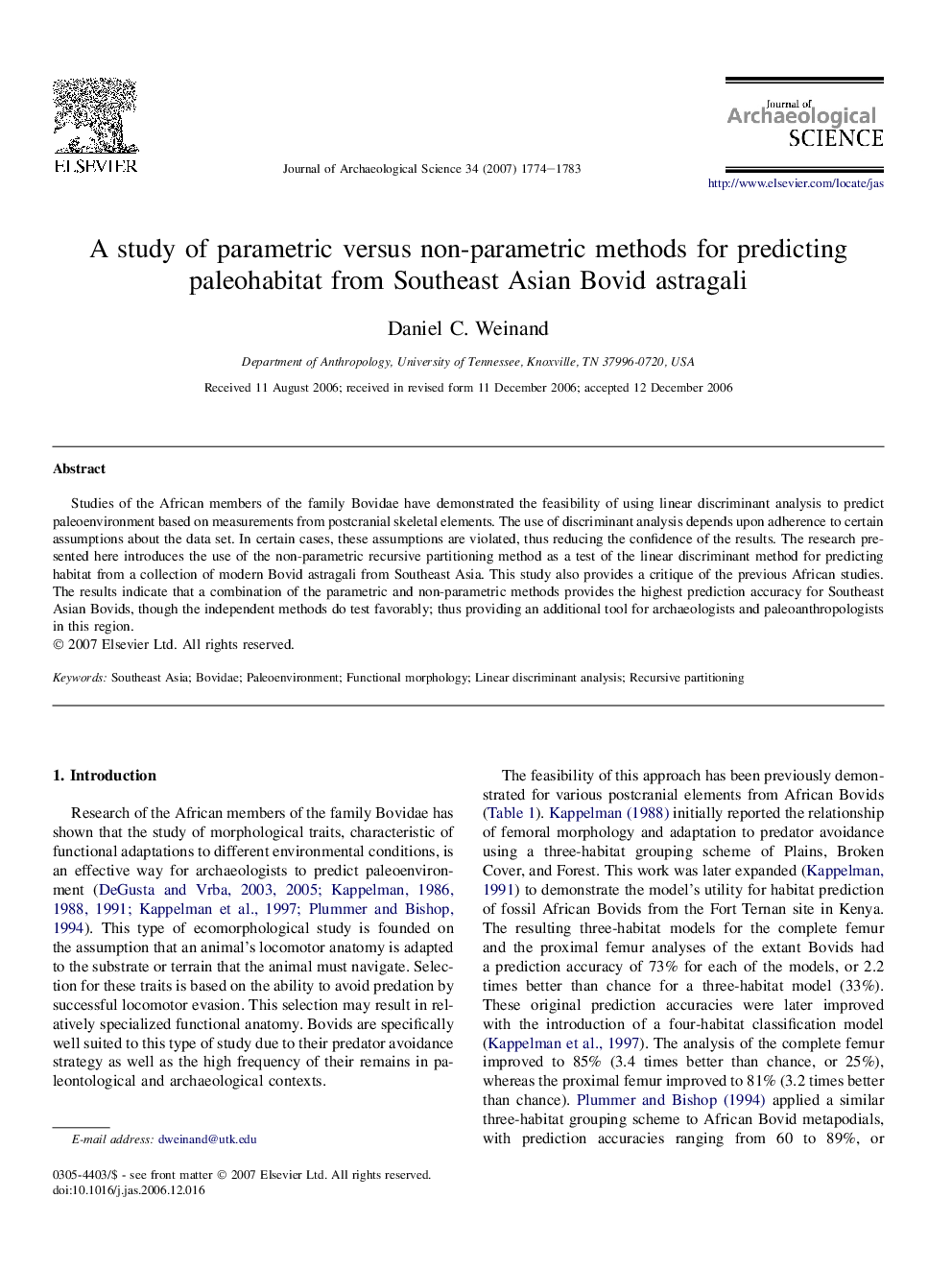| Article ID | Journal | Published Year | Pages | File Type |
|---|---|---|---|---|
| 1037600 | Journal of Archaeological Science | 2007 | 10 Pages |
Studies of the African members of the family Bovidae have demonstrated the feasibility of using linear discriminant analysis to predict paleoenvironment based on measurements from postcranial skeletal elements. The use of discriminant analysis depends upon adherence to certain assumptions about the data set. In certain cases, these assumptions are violated, thus reducing the confidence of the results. The research presented here introduces the use of the non-parametric recursive partitioning method as a test of the linear discriminant method for predicting habitat from a collection of modern Bovid astragali from Southeast Asia. This study also provides a critique of the previous African studies. The results indicate that a combination of the parametric and non-parametric methods provides the highest prediction accuracy for Southeast Asian Bovids, though the independent methods do test favorably; thus providing an additional tool for archaeologists and paleoanthropologists in this region.
